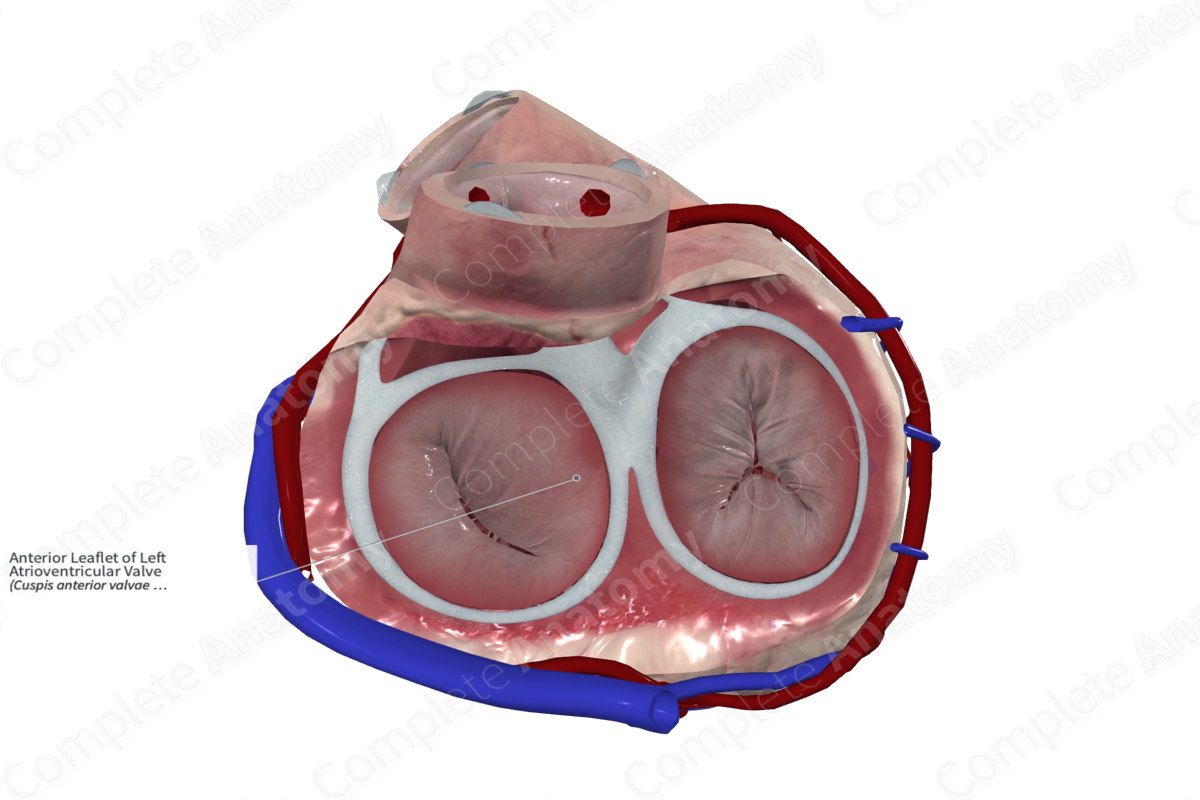
Anterior Leaflet of Left Atrioventricular Valve
Cuspis anterior valvae atrioventricularis sinistrae
Read moreMorphology/Structure
The left atrioventricular valve has two leaflets, one anterior (aortic) and one posterior (mural), both of which attach to a strong fibrocollagenous anulus.
The leaflets have a fibrous core and are coated with endocardium. Each leaflet has a rough, clear, and basal zone. The rough zone corresponds to the region of the free margin where it provides an attachment for the chordae tendineae. It's this region that comes into contact with the free margins of the adjacent leaflets when the valve is closed. The clear zone is smooth and more opaque and is the site of attachment of occasional chordae tendineae. The basal zone is thicker, due to increased collagen. It’s the region where the leaflets insert into the anulus.
The posterior leaflet has a wider attachment than the anterior leaflet. It attaches to approximately two thirds of the circumference of the anulus. When the valve is shut, left atrioventricular valve has a single area of apposition termed the commissure. This contrasts with the three commissural regions found within the tricuspid, right atrioventricular valve.
Key Features/Anatomical Relations
The leaflets of the left atrioventricular valve are supported by and attached to chordae tendineae, which in turn attaches to the papillary muscles of the ventricular wall. The anterior leaflet is connected to the superior papillary muscle via chordae tendineae.
Function
The anterior leaflet of the left atrioventricular valve works with its counterpart, the mural leaflet, to prevent retrograde blood flow into the left atrium during ventricular systole.
Learn more about this topic from other Elsevier products
Atrioventricular Node

The AV node is a small subendocardial structure located within the interatrial septum at the distal convergence of the preferential internodal conduction pathways that course through the atria from the sinus node.




